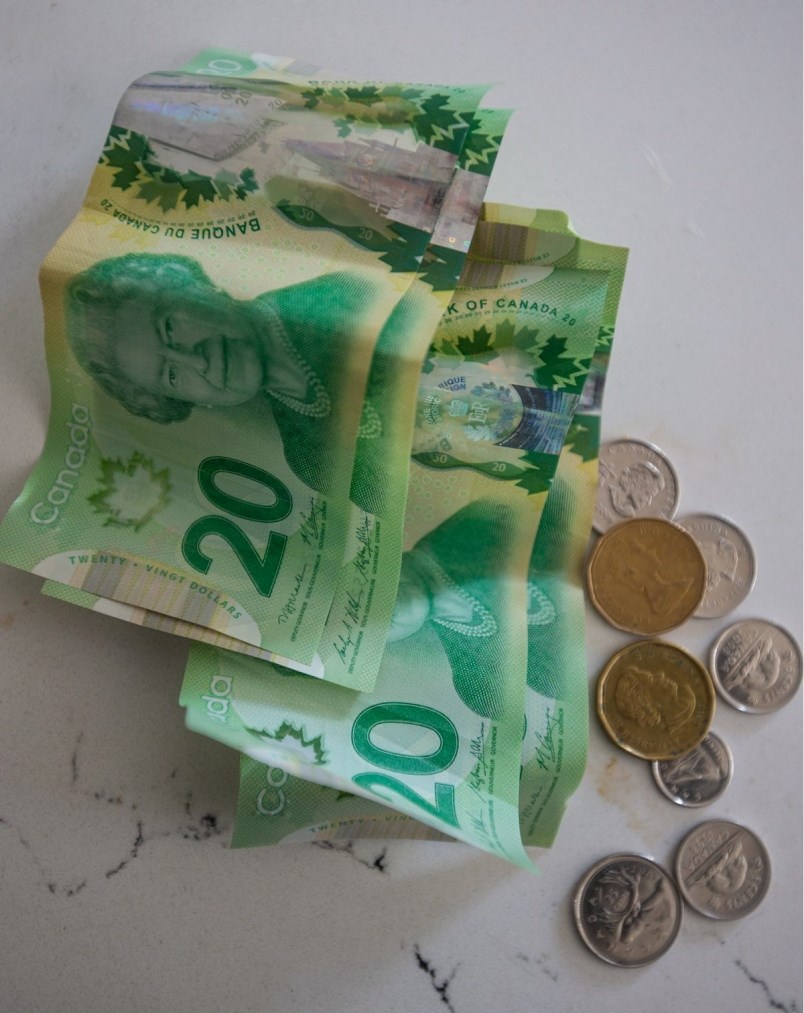The COVID-19 pandemic has changed the way Canadians buy and sell.
The move to tap, swipe and insert cards, use electronic transfers and pay via mobile devices has all but rendered obsolete the idea of handing over a wad of cash for any kind of item.
“What we are seeing, and it’s been a general trend through the country, is consumers are definitely becoming a lot more reliant on electronic payments, mobile payments [and cards],” said Yana Melnichuk, Coast Capital Savings’ vice-president of digital banking. “It has been a trend happening over the last few years, but it has been accelerated by the pandemic, with merchants encouraging their shoppers to use more contactless payments.”
Melnichuk said when the pandemic first hit, they saw a slight spike in ATM usage, as some people seemed driven to have cash on hand.
Overall, however, there has been a steady drop in ATM usage over the last several years, she said, and credit unions in general have reported a 50 per cent drop in ATM usage compared with last year.
That rings true with a recent Payments Canada study that showed dramatic shifts in Canadians’ payment preferences during the pandemic.
The organization, which oversees and enables the bulk of day-to-day Canadian commerce to the tune of $218 billion daily, said its survey found 75 per cent of Canadians were spending less than before COVID-19 hit.
The nationwide survey of consumers also found 42 per cent of respondents said they avoided stores that did not accept contactless payment and 52 per cent said they tried not to exceed the contactless limit when buying something in-store.
“Cash and cheque payments have declined dramatically, having been replaced with contactless payments and other types of electronic payments,” said Tracey Black, chief executive of Payments Canada, who said the pandemic will likely act as a catalyst in transforming the Canadian payment landscape forever.
The survey found Canadians were using less cash, cheques and prepaid cards, and were using Interac e-Transfer, PayPal and credit cards more frequently. It noted 53 per cent of Canadians said they were using card or mobile tap payment for in-store purchases more often than pre-pandemic.
Though many local retailers are encouraging contactless payment or in-app purchases, cash is still a small part of the mix at Greater Victoria restaurants — servers prefer it because they are more likely to get their tips immediately.
Cash is getting special treatment. “We are literally laundering cash,” said Jason Butcher, manager of the Heron Rock Bistro in James Bay. “We have a bleach solution that we spray the money down with. We prefer cards.”
Butcher said less than 10 per cent of customers will pay cash for a meal, a number that hasn’t changed much during the pandemic.
“You still get people who aren’t bothered by this pandemic at all and wondering why people won’t take their cash,” he said.
Petr Prusa, owner of Floyd’s Diner, said cash has all but disappeared.
“We will happily take it. It costs us money every time someone uses the debit/credit machine,” he said, noting between the three Floyd’s locations and his interest in Belleville’s Watering Hole and Diner, they pay about $90,000 a year in transaction fees.
Belleville’s reported having about 25 per cent of its revenue in cash pre-COVID, but now 99 per cent of all transactions are done with debit or credit cards.
Mike Murphy, owner of 10 Acres Farm and Restaurant Group, said they saw only about eight per cent cash pre-pandemic and that has changed to no more than two per cent.
Murphy said in general, the business community prefers cards, and the government certainly prefers reducing the grey area created by cash businesses.
Melnichuk said cash still has a place, and there will always be a group that will insist on using it.
She noted that many people use cash as a means of sticking to a budget, or to buy things sourced from online marketplaces such as Craigslist.
However, she also pointed out financial institutions have been introducing software to help with personal financial management, and e-transfers have grown in popularity for small-ticket items bought from other individuals.
“There may be people who prefer to use cash as their preferred channel, but there may be [fewer] venues where they can use it over time,” she said. “Just like cheques.”
The Canadian Association of Secured Transportation is pushing for more use of cash, citing fraud as a good reason to stick with paper money.
The association, which represents companies such as GardaWorld that move money around, said a study done for the International Security Ligue found the global economy currently loses $4.1 trillion US annually to fraud, mostly due to electronic-payment fraud.
The study found electronic-payment fraud increased on average by 16.2 per cent each year since 2014, while paper-money fraud increased by just 1.7 per cent each year.
“Cash is always important to support consumer options,” said Steven Meitin, the association’s president. “However, this research shows that cash is also important to governments, businesses and central banks to help counter fraud. Criminals see more opportunities as more people rely on technology, which is why different payment forms should remain a primary concern for consumers and governments.”
The association also pointed out that a discussion paper on the impact of the pandemic on the demand and use of cash suggested Canadians are still using cash and, in some cases, increased their holdings of cash notes.
That paper showed 36 per cent of Canadians reported using cash for payments over the past week, though a majority used debit or credit.
The paper also noted 74 per cent have no plans to go cashless in the next five years.
“We have continued to maintain that consumers want a variety of means to pay for their goods and services,” said Meitin.
This article originally appeared here.




